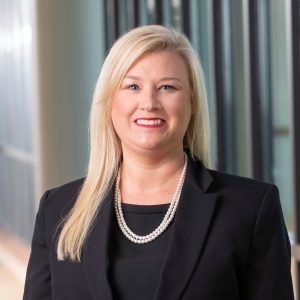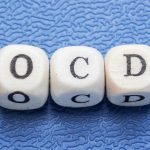Category: OCD
 By: Dr. Nicole Bosse, PsyD, Lindner Center of HOPE
By: Dr. Nicole Bosse, PsyD, Lindner Center of HOPE
OCD is a disorder that responds very well to a form of Cognitive Behavioral Therapy called Exposure and Response Prevention. Brain imaging studies found that people with OCD have excessive levels of activity in the orbital cortex, the caudate nucleus, the cingulate gyrus, and the thalamus. Differences are unrelated to intelligence and most other cognitive abilities. These studies also show that the brain changes in response to Exposure and Response Prevention. The overactive parts of the brain become less active and similar to others without OCD after engaging in Exposure and Response Prevention.
Exposure and Response Prevention consists of confronting what you are afraid and abstaining from the related compulsions. Specifically, exposures are purposeful and gradual confronting and maintaining contact with feared objects, thoughts, or images to allow the anxiety to rise, peak, and subside. Response Prevention is the halting of neutralizing actions and/or thoughts (i.e., compulsions) to allow habituation to a feared stimulus (e.g., not washing after touching a doorknob). This is done with the help of a trained therapist. It is a form of therapy that is collaborative and the individual works with the therapist to brainstorm various exposure ideas to start forming a hierarchy.
A hierarchy ranges from items that bring about low to high distress/anxiety. An example hierarchy for someone that has a fear of snakes could look like: reading about snakes, looking at pictures of snakes, watching videos of snakes, looking at snakes behind glass, being in the room with someone holding a Gardner snake, being in the room with someone holding a boa constrictor, touching a Gardner snake while someone else is holding it, touching a boa constrictor that someone else is holding, holding a Gardner snake, and being in a bathtub with boa constrictor snakes. The last item can be something that wouldn’t necessarily be done for exposures, it is just used as a something to help scale other exposures.
There are two types of exposures I usually talk about with patients, planned vs. spontaneous. Planned exposures can take various forms, from in vivo to imaginal. In vivo exposures are exposures that are completed in person, for example touching things that could be contaminated with germs or breaking down avoidance of certain people for fear of harming them. Imaginal exposures are usually implemented when it is impossible/unethical to do in person exposures. For example, the individual can be instructed to write sentences about hurting someone or write an imaginal script detailing their worst fear. These exposures can be done over and over in one sitting until it starts to get boring.
Spontaneous exposures are things that happen throughout the day that are unplanned and typically cause significant anxiety. For instance, if someone is afraid of germs and someone sneezes on food etc. With spontaneous exposures, I usually instruct individual to do one of two things, either abstain from the compulsion or do something called ritual weakening. Ritual weakening is completing the compulsion but doing it differently than the OCD desires. For example, postponing washing hands or writing down that you are giving into a compulsion in order to be able to do the compulsion. The idea is it makes it slightly less convenient to do the compulsion, which over time weakens OCD.
In sum, Exposure and Response Prevention is a very successful form of treatment for OCD. To be effective, the individual must be willing and motivated. An individual is never made to do something they are uncomfortable with. It is best to go slow in order for the individual to learn their anxiety will decrease over time.












